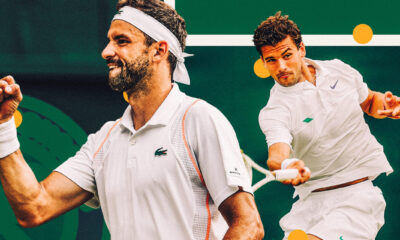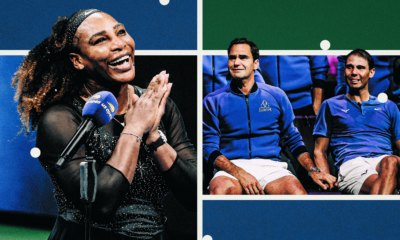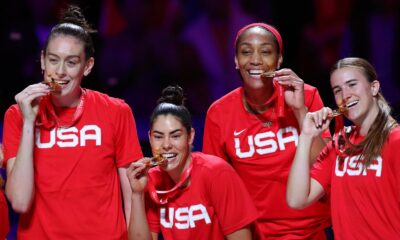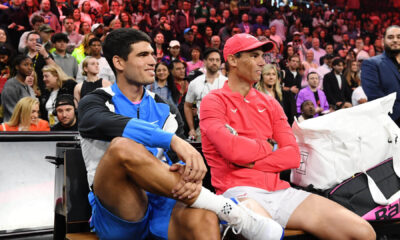Sports
Swiatek, Sabalenka and Rybakina push each other to dominance in women’s tennis
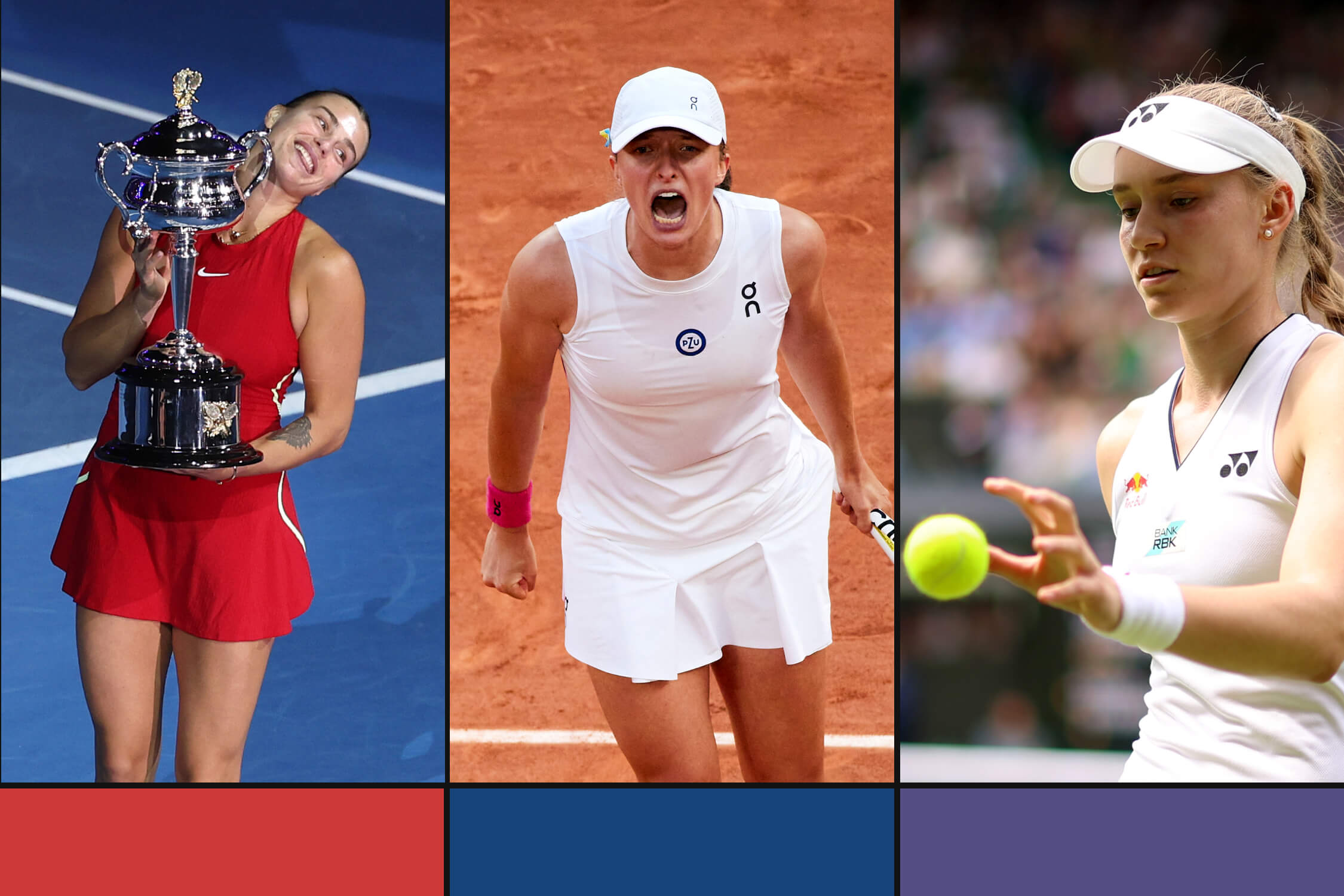
If there were any doubts about the 2024 clique in women’s tennis’ elite, Iga Swiatek, Aryna Sabalenka and Elena Rybakina have swept them away over the past three weeks.
It’s been a few days since Swiatek and Sabalenka produced one of the sport’s best matches on Saturday evening, in the final of the Madrid Open.
Swiatek’s 9-7 win in a third-set tiebreak left the world No. 1 flat on her back on the red clay of the Caja Magica. It left Sabalenka, the world number 2, slumped in her chair, with a towel over her head and face, as the very recent memory of three championship points haunted her mind.
She hadn’t lost them. Swiatek had ruthlessly taken them from her.
This was two days after Sabalenka defeated Rybakina in a semi-final match, in another third-set tiebreak, which saw the Belarusian need 12 points to complete her grinding comeback, 1-6, 7-5, 7-6(5). And it was two weeks after Rybakina had knocked out Swiatek in a semi-final in Stuttgart, which also lasted three sets – at a tournament that Swiatek had owned for two years.
The fight between Swiatek and Sabalenka lasted three hours and eleven minutes (Julian Finney/Getty Images)
These women are thisclose now, and they know it. In such rivalries, fiddly measurables, such as who hits the more powerful forehand or scores a higher percentage of points at the net, don’t determine as much as intangibles. It becomes a matter of who can execute the best shots at the biggest points, and lately all three have been doing that. In 2024, the top of women’s tennis is tighter than ever.

GO DEEPER
Tennis’ top women say the sport is broken. This is why
“It was more about, you know, who’s going to be less stressed and who’s going to be able to play with more freedom,” Swiatek said in the aftermath of Saturday’s chaos.
“Most of the match she played more, I felt like some decisions were beautiful… how to say… brave. I was sometimes, you know, a little bit back. So in the end I just wanted to not do that and also be brave.”
This was that rare, special tennis where both players play at their peak simultaneously and for a long time, with a title at stake. For a while after the sting of initial disappointment, Sabalenka knew what everyone watching did: that she was playing about as good a match as she could, that almost every point was a toss-up, that she had been part of one of the greatest women’s finals ever .
“She just played a little bit better in those key moments,” Sabalenka said. “That is it.”
Men’s tennis has endured nearly two decades of three guys winning virtually everything: Novak Djokovic, Rafael Nadal and Roger Federer, while Andy Murray made it a four-player battle for part of the 2010s.
If she can figure out her serve, Coco Gauff could crush the current three-way battle at the top in no time. She is actually ranked No. 3 in the world, one spot ahead of Rybakina, but has failed to consistently reach the heights of this trio since winning the US Open by beating Sabalenka last September; in 2024, the other three have passed her by.

It’s been a while since women’s tennis had something like this.
Serena Williams has had some worthy opponents over the years – her sister Venus, Justine Henin, Kim Clijsters, Victoria Azarenka – but a sustained troika at the top has never quite materialized. Since 2017, 18 different women have won 24 Grand Slam singles titles. The returning champions – Simona Halep, Naomi Osaka, Ashleigh Barty and Swiatek – have never played the same opponent twice in a Grand Slam final.
Swiatek, Rybakina and Sabalenka are also waiting for that. The only time two of them met in a final was last year at the Australian Open, where Sabalenka prevailed over Rybakina, again in three sets, in perhaps the highest quality women’s final we had in the Spanish capital on Saturday seen.

Sabalenka has a 6-3 career win-loss record against Rybakina (Lintao Zhang/Getty Images)
Maybe that will change. Based on what happened on Saturday and what has happened over the past two years, there is a good chance this will happen.
“We push each other,” Rybakina said after her loss to Sabalenka, a match in which she was a forehandsitter at the front of the court so she would likely not be locked down. “We challenge each other to improve.”
This dynamic will be familiar to fans of the Big Three/Four era in the men’s game, which grew into something tennis writer Matthew Willis carefully conceived an ouroboros, each encounter between them, and the various stylistic and psychological battles therein, taking the players involved to ever greater heights, further and further away from the rest of the field.
This could all take 10 minutes, or 10 years. Sabalenka, who is from Belarus but lives largely in the American city of Miami, Florida, turned 26 on Sunday; Rybakina, Russian by birth, Kazakh by nationality, is 24; Swiatek, Poland’s first real great, is 22. (Gauff is 20 and improving every year.)
Injuries, the strain of a brutal schedule, a new crop of young talent, a back-in-form Osaka… many things could make this triangular rivalry obsolete very quickly. The squad may not even have fully developed yet, as Swiatek has surged ahead in rankings and titles, amassing 18 in a three-year period where Sabalenka has four and Rybakina six.

GO DEEPER
Iga Swiatek’s 100 weeks as world number 1: The streak, the slams, the bagels
Right now, though, there’s something irresistible about the dynamic between these three athletes, who at first glance all bring something different to the field, but also subtly carry many of each other’s strengths.

The grass suits Rybakina over Swiatek and, marginally, Sabalenka (Clive Brunskill/Getty Images)
Sabalenka comes with raw power and unparalleled intensity, but also with a rapidly improving net game and the ability to sweep away a match that she shares with Swiatek.
Swiatek speeds around the court and through her matches with that terrifying efficiency, displaying an innate versatility that the others are still trying to acquire – but her prodigious topspin belies the sheer speed and power of groundstrokes usually attributed to Sabalenka.
Rybakina’s elegant, effortless power and sometimes gossamer touch make the calm of her glassy eyes seem less titanium than Swiatek’s focus, but in reality, like her tactical talent, it is just as immobile.
Where this will all take place in the coming weeks as the tour heads to Rome and then Paris for the final and biggest clay court events of the year, before shifting to the grass of Wimbledon, is anyone’s guess.
Madrid, where the harder court and height make the ball fly, seemed to favor Sabalenka and Rybakina, who are power players, over Swiatek, but she remains the queen of the clay. This made that title an important triumph for the Pole – the only major event on clay she had never won.
Now tennis is moving to the slower, more traditional clay courts she prefers at the Italian Open and French Open. She has won three times at Roland Garros in four years. That could spell trouble for her enemies.

Circumstances in Rome and Paris are getting to Swiatek (Julian Finney/Getty Images)
On the other hand, Rybakina is the defending champion in Rome. Her breakthrough victory came against Serena Williams in Paris in 2021; Sabalenka was one point away from the French Open final last year before tightening up in crucial moments. She doesn’t do that that often anymore.
After the clay comes the grass. Swiatek is still a novice on the surface and is the first to say so. She has said that at some point in her career she will spend more time getting more comfortable with the speed and low bounces, but she hasn’t done that yet.
Rybakina won Wimbledon in 2022. Sabalenka lost a lead there in the semi-finals last year. Her power can be used anywhere. On grass it can be overwhelming.
Then it’s back to Paris and Roland Garros for the Olympics, and then to the hard courts in North America, which should benefit Sabalenka, the two-time defending Australian Open hard court champion and last year’s finalist in the US Open…although Swiatek is the only one of the three to win at Flushing Meadows in 2022.
Swiatek, Rybakina and Sabalenka are getting asked about these second Big Three things a lot these days. Usually they try to shake it off. The other Big Three have won 66 Grand Slams and may not be done yet. They are at seven. There’s still a long way to go, but this is where they hope this is all going.
“I’m very happy to be one of these Big Three,” Sabalenka said on Saturday evening, having finished second and trying to grab a silver lining.
“It really motivates me a lot to keep working and keep improving myself so that I can stay there, and then, you know, just be there and get as many wins against them as I can.”
(Top photos: Daniel Pockett; Quality Sports Images; Clive Brunskill/Getty Images)

